It is little secret that I am a tube fan, and ampsandsound is one of my favorite tube amp companies (Why? We’ll get to that later.). The only thing that kept this from being my opening review for HiFiAudio.Guru was the question of speakers. Our original choice of speaker did not pan out, they simply did not respond, at all (and for that I am thankful). So when Justin Weber (founder of ampsandsound) suggested that we use the system that he planned to display at T.H.E. (The Home Entertainment) Show 2020 this June in Long Beach, CA, I jumped at the chance, enter Fritz Speakers (after the writing of this review T.H.E. Show 2020 was rescheduled, though no new dates have been announced at this time). While I had not personally heard Fritz Speakers, I trusted Justin’s ear, especially when it comes to his own amps. While Cardas and VPI had always been part of the plan for this review, I initially intended for this to be an analog-only review but the amp and speakers arrived about a week before the turntable, so I used the Earmen TR-Amp as a DAC/Preamp to burn the system in. The last addition to this system came thanks to Frank Iacone’s coverage of CanJam NYC 2020 where I noticed for the first time the Schiit SYS passive preamp. My original intent was to use the headphone amp in the VPI as preamp, but this introduced cabling issues as I discovered the volume control did not affect the RCA outputs so the introduction of the $50 SYS into the system was the least expensive solution without actually compromising the sound of the system.
Cardas Iridium Cables:
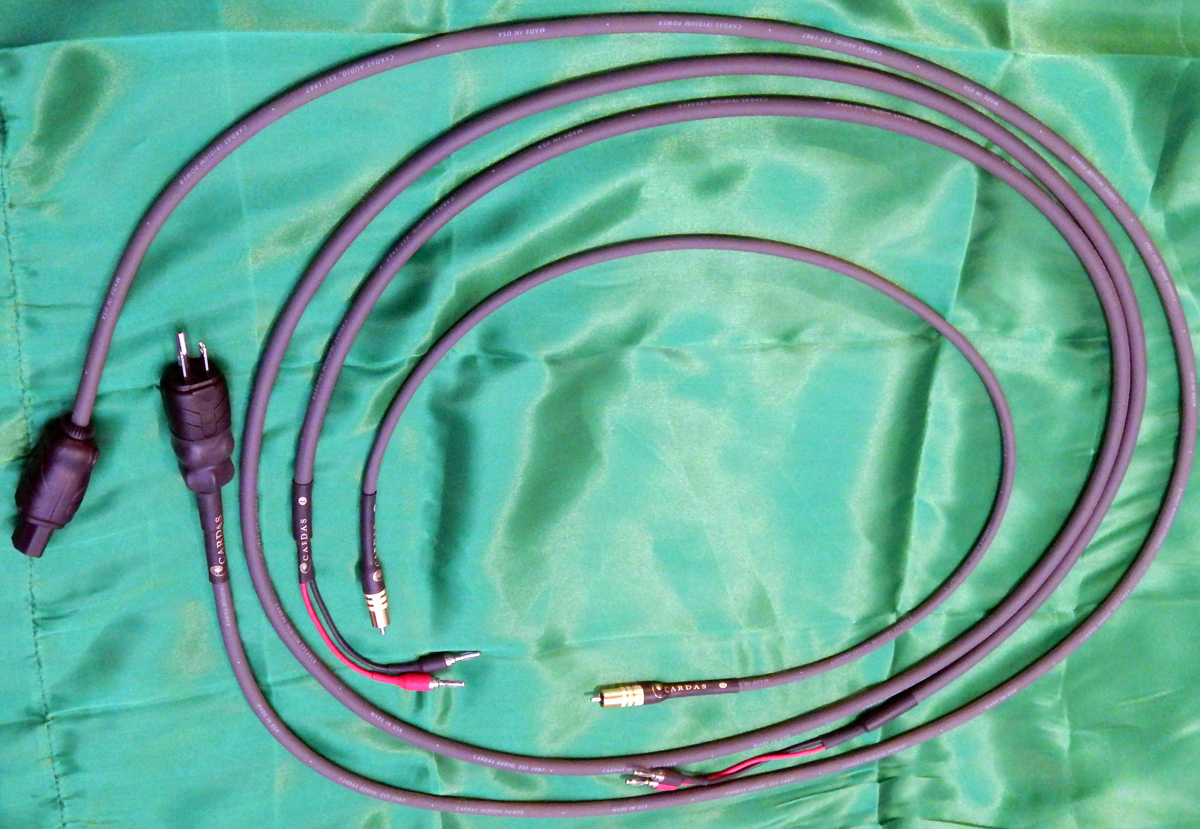
As I have mentioned before, perhaps often, cable affects the sound of a system every bit as much as any other component other than the speakers, so in any proper system review, cables need to be a factor. Things outside the signal path, like power cables, can be considered a tweak and can be upgraded later, interconnects and speaker cables are integral to the aggregate sonic profile of the system.
Cardas has always been my favorite cable line since I first discovered them in the late ‘80s. George Cardas’ use of the Fibonacci Sequence to develop his “Golden Ratio” of non-harmonic wire strands for what he calls Constant Q Stranding was inspired. To quote the Cardas home page:
“a high-end audio cable must balance resistance, capacitance, inductance, conductance, velocity of propagation, RF radiation and absorption, mechanical resonance, strand interaction, high filtering, reflections, electrical resonance, dissipation factors, envelope delay, phase distortion, harmonic distortion, structural return loss, corrosion, cross-talk, bridge-tap and the interaction of these and a hundred other things.”
A goal Cardas handily achieves, creating a cable with unmatched in my experience, linear bandwidth, phase linearity, phase coherency, tonal balance, and timbre.
Cardas Iridium cable is their entry-level design incorporating, Golden Ratio, Constant Q, Cross-Field, pure copper Litz, conductor technology, meaning that it provides that unique Cardas performance at a price that fits within the confines a medium budget audiophile system.
The cables used in this review were:
- three 2-meter Cardas Iridium Power Cables ($300 ea.)
Technical Specifications:
Construction: Shielded, with two Cardas 11.5 AWG Crossfield Conductors, PFA tape dielectric, toroidal filter, Cardas 3455R Power Connectors.
Termination Options: Iridium Power comes standard with Cardas 3455R wall plugs & 15 amp IEC connectors, featuring copper blades plated with rhodium over silver. All standard international wall plugs are also available, as are 20 amp IEC connectors.
- two 1-meter pairs Cardas Iridium Single-Ended (RCA) Interconnects($250 ea.)
Technical Specifications:
Construction: .300″ O.D., Cardas copper, PFA & Carbon Impregnated tape dielectric, 4 x 24.5 AWG conductors, Golden section, Crossfield, litz, spiral shield, TPR jacket.
Termination Options: Iridium is terminated with Cardas GRMO RCA plugs, or Neutrik XLRs.
- one 3-meter pair Cardas Iridium Speaker Cables fitted with Banana connectors ($500).
Technical Specifications:
Construction: .345″ O.D., Cardas copper, PFA dielectric, 2 x 11.5 AWG conductors, Golden section, twin axial construction, litz, neoprene jacket.
Termination Options: Cardas milled spades, Cardas CABE banana.
ampsandsound Zion Monos:
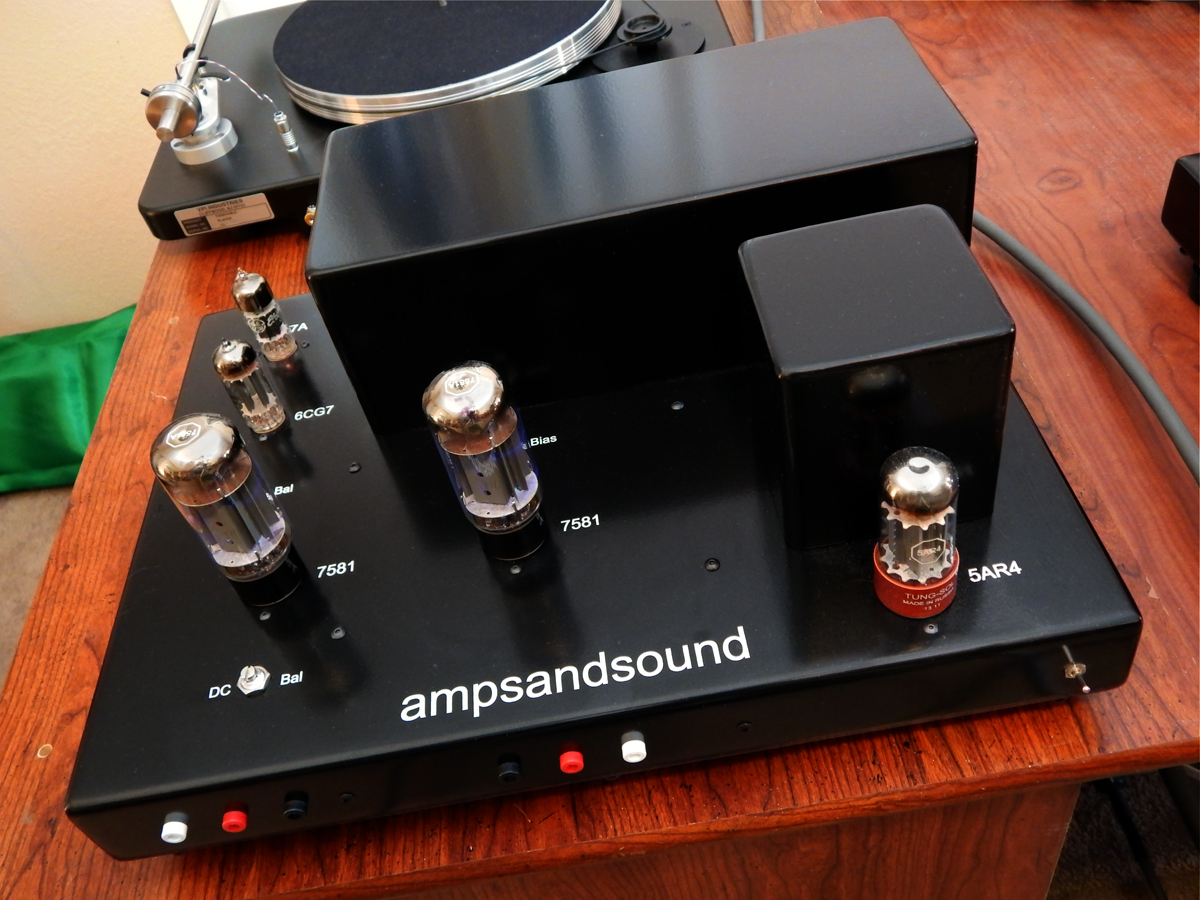
Behemoth is the first word that came to mind as I dragged the 60lb plus Pelican style wheeled (thank god) cases into my house and into my listening room. That impression was not changed pulling the ampsandsound Zion Monos out of their cases. In fact, I believe them to be heavier than the speakers which are no lightweights. I began with them on the floor, but eventually (IE: when the turntable arrived) moved them up to my test bench to accommodate my chosen cable lengths (now I need traction 😉 ).
The story of the ampsandsound Zion Monos is fairly lengthy and can be found Here.

Suffice it to say that the Zions are a fully hand made (except the chassis, in which the original was hand designed and built, then sent to a CNC metal fabrication house to reverse engineer into a reproducible model) using turret terminals and point to point wiring (as opposed to printed circuit boards) and no semiconductors are used in the design. This old school approach is much akin to using high end interconnects inside of your amplifier, meaning greater linearity, better noise rejection, and better isolation among other things. The design is inspired by the classic Harman/Kardon Citation V, employing a tube complement of two Tung-Sol 7581s, one Tung-Sol 5AR4, one Electro-Harmonix 6CG7EH, and one NOS GE 12BY7A (obviously your tube complement may differ depending on availability but these are the ones I was supplied with). The key factor in any tube amp (except OTL amplifiers which surrender a certain amount of musicality to avoid this issue) is the output transformer. For the Zion, ampsandsound employs a custom made transformer that offers a bandwidth of 4Hz to 115kHz belying the myth that what makes tube amps sound good is rolled off highs.
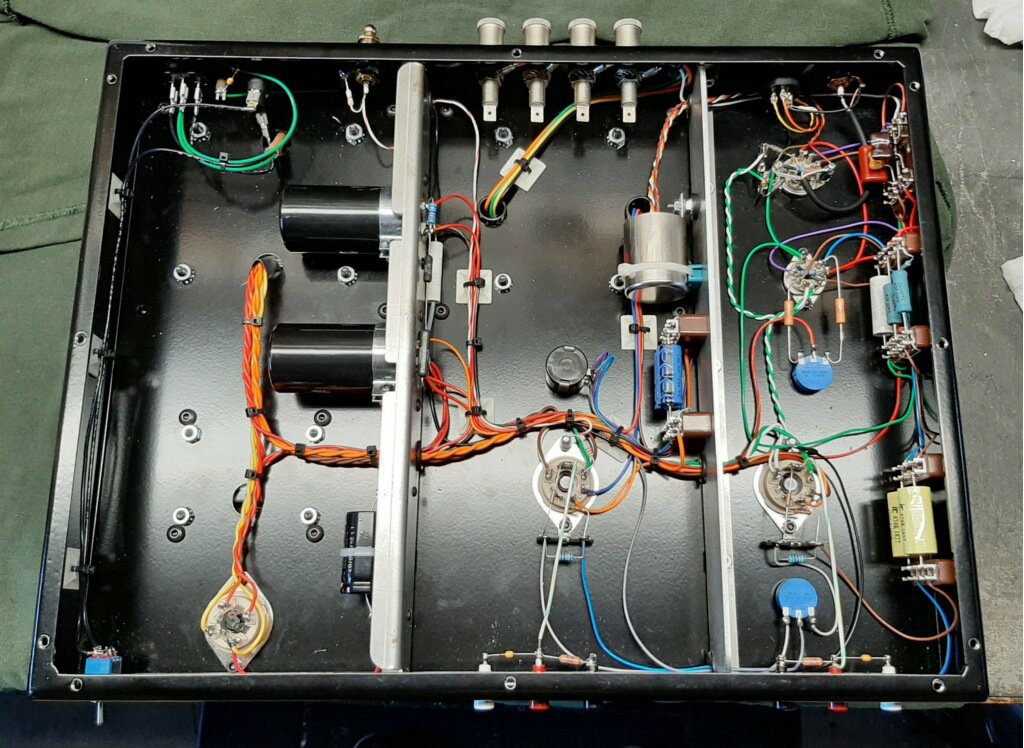
Which brings us back to the question; “Why ampsandsound?” Justin Weber is one of the few audio engineers in personal audio, and I would venture one of the few in his generation that understands what tube sound is all about. Anyone who tells you that a solid-state amplifier can sound like a tube amp by rolling off the highs and adding a magic pleasant sounding distortion, doesn’t get it at all. It is all about Transient Intermodulation Distortion. Ironically, by having a slower slew rate, tube amps allow you to hear more of the resolution of the music as it is not covered up by TIMD. While tube amps, do produce higher levels of THD than an equivalent solid-state amplifier, these levels are universally recognized to be below the threshold of human hearing, but since it is an easily tested for and dealt with spec, it is what solid-state amplifier manufacturers focus on.
So ampsandsound have focused on the weaknesses of tube amps, and worked to overcome them, which is for the most part linear bandwidth. Tube amps are voltage devices and don’t have the copious amount of current that big solid-state amplifiers have (this is not to be confused with Voltage Mode amplification vs. Current Mode amplification which is a totally different subject) to drive and control low frequencies. Justin has overcome this limitation, and the transformer appears to be a large part of this. So in short, ampsandsound amplifiers give you the linearity of tonal balance and the deep impactful, yet tightly controlled bass associated with the better solid-state amplifiers, with the resolution and musicality of tube amps, which is a win-win in my book.
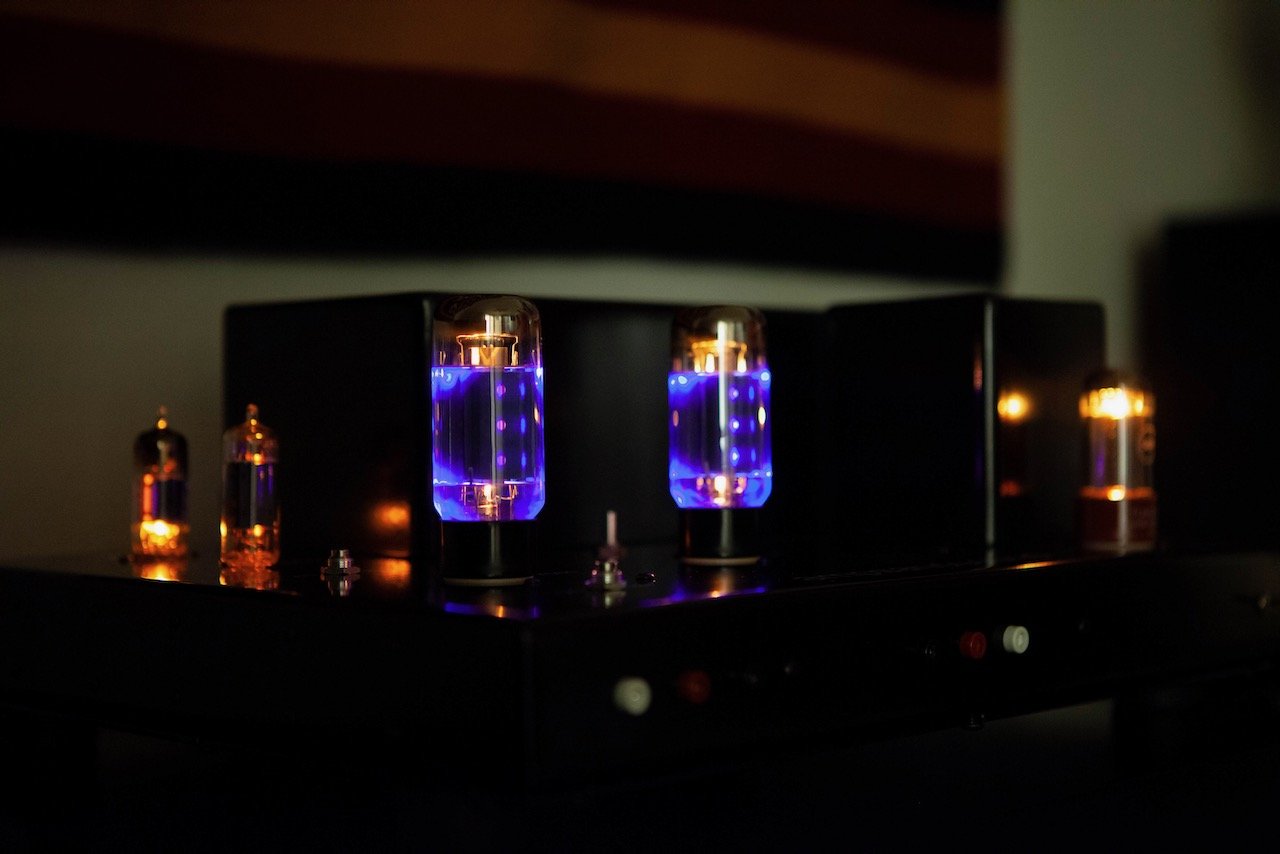
Price: $6,500 each
Specifications:
All transformers are 200% over spec’d. Filaments are spec’d at 8amps, and output transformers are rated for 60 watts.
The bench report is fantastic, 32 watts RMS
Ultra-wide bandwidth; 4hz to 115khz @ 1 watt
10hz to 110hz @ 10 watts
Fritz Speakers Carrera 2 Way vented compact sized stand mounted monitor:
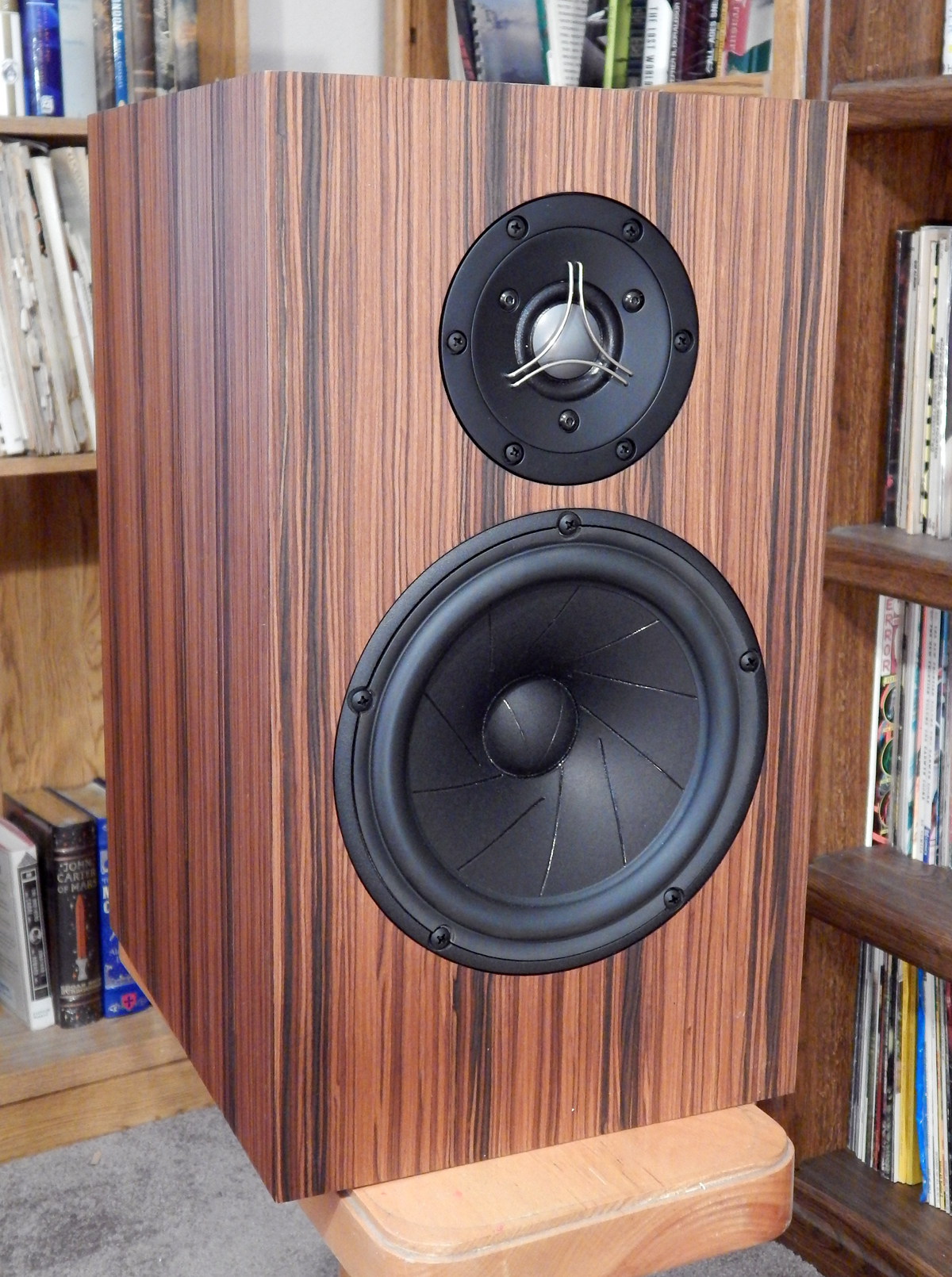
Fritz Speakers are new to me, as I have already mentioned. On top of that, the speakers used for this review were so new, that they had yet to have a name. (Editor’s Note: Subsequent to publication of this article it was decided to simply call the speaker the Fritz Carrera.) How they differ from the standard Fritz Speakers Carrera BE is in the tweeter which has been sourced from a different manufacturer for improved performance and uniformity, as well as the corresponding crossover. That being said, what we are looking at is a very solid and beautifully finished 16” x 9” x 12”, 30lb speaker with a 7″ paper cone revelator featuring a non-resonant cone and dust cap structure, dynamic linear suspension, SD-1 magnet system, “Grasshopper” cast chassis with maximized air flow and resonance terminating mounting system for the midrange/woofer which is said to have less resonance in all structures, lower compression and higher linearity, faster termination of excess energy and higher sound pressure capability and a 1” Beryllium Dome dome tweeter, with a series crossover for low phase distortion which boasts an impressive frequency response of 36Hz to 40kHz. While ideally, you might want a subwoofer to supplement the 15Hz to 36Hz range (not necessarily an easy bill to fill actually) for that rare pipe organ recording, 36Hz covers the majority of music whether acoustic or electronic. Given my relatively compact listening room, these appeared to be a perfect choice of speakers.
Price: $3,500 pair
Specifications:
| Frequency Response: | 36Hz-40Khz +/- 3 db |
| Impedance: | 8 Ohms nominal |
| Sensitivity: | 87 db (1 Watt, 2.83 V @ 1 Meter) |
| Bass/Midrange Driver: | 7″ paper cone revelator features a non-resonant cone and dust cap structure, dynamic linear suspension, SD-1 magnet system, “Grasshopper” cast chassis with maximized air flow and resonance terminating mounting system. Less resonance in all structures, lower compression and higher linearity, faster termination of excess energy and higher sound pressure capability. |
| Tweeter: | Satori TW29BN-B-8 Beryllium Dome Tweeter with Neodymium Magnet Beryllium dome for non-resonant high-frequency extension Two part aluminum faceplate with integrated mechanical decoupling Dual balanced compression chambers for improved dynamics Dual copper caps for absolute minimum voice coil inductance and minimum phase shift High saturation neodymium motor system with T-shaped pole piece for lower distortion Non-reflective cast aluminium chamber with optimized damping for improved dynamics Shallow flow optimized magnet structure for optimum coupling to rear chamber CCAW voice coil for low moving mass Long life silver lead wires Low resonance frequency for extended range |
| Crossover: | Series crossover without any capacitors or resistors in the circuit with the tweeter. Acoustic Reality Series Crossovers |
| Dimensions/Weight: | 16H x 9W x 12D, 30 lbs (each) |
| Recommended Power: | 50 – 200 Watts RMS, without clipping |
VPI Player:
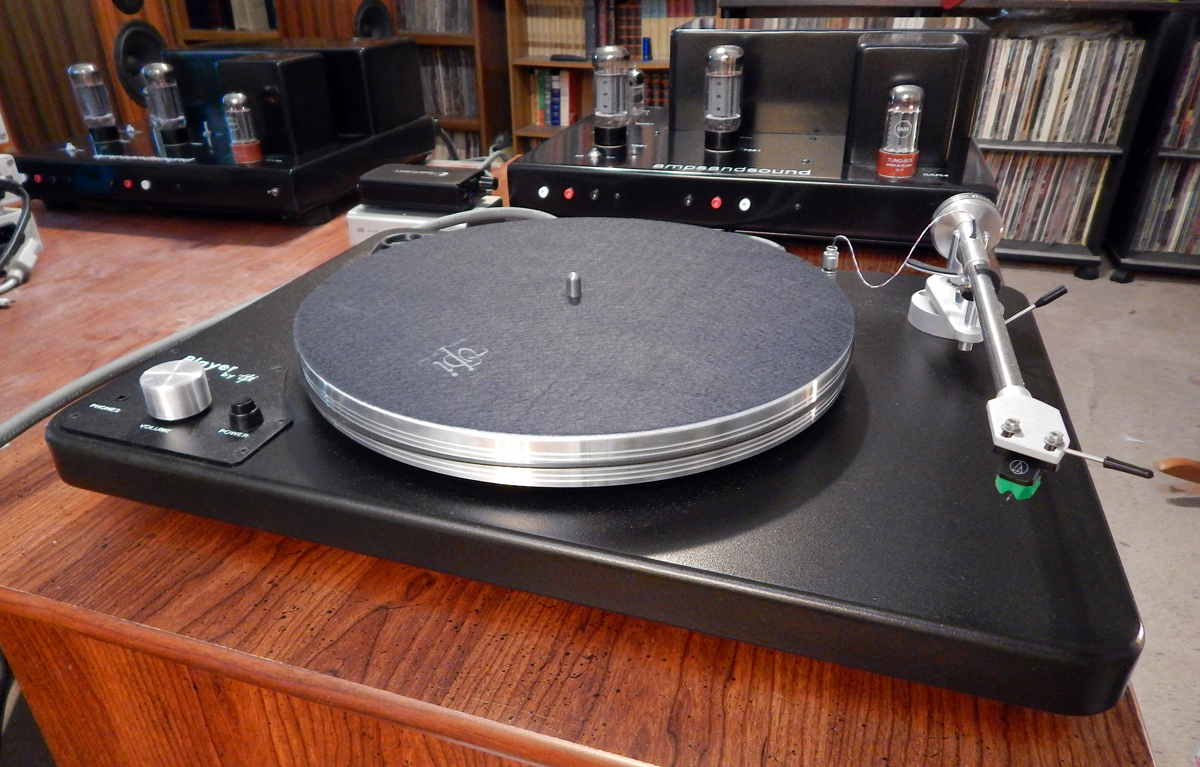
VPI, like Cardas, is another one of those companies that I have had a love affair with since the late ‘80s. What’s astounding is, in this day of $150,000 turntables, the VPI Player, a fully self-contained audio system, sells for about half of what the entry-level VPI turntable only of those early days, and yet it still provides amazing performance. This is not my first run-in with the VPI Player, in fact a couple of years ago I reviewed it for our sister publication Headphone.Guru, which you can read Here.
That being said, the VPI Player of today appears to be much improved over the one of two years ago.
The reason I chose the VPI Player, is because in this system, which does not use a preamp, I needed a turntable with a built-in Phonostage, and I planned to use the Headphone Amplifier for volume control. The extensive list of features for the VPI Player is as follows:
- Gimbal Tonearm
- AT-VM95E Cartridge
- Built-in Phonostage
- Built-in Headphone Amp
- Ready to play out of the box
- Made in the USA
The turntable I received had a handsome black plinth which matched really well with the amplifiers as they were also black. It came packed completely assembled and set up, though it did include assembly instructions which might indicate a change in packaging or simply accommodation for show models, but don’t be surprised if yours does not come assembled, which is only a simple matter of placing the platter and putting on the belt (I seem to remember this being the case for my previous review). Recommendation was to run for 20 hours for break-in, I did 24 hours 33 ½ RPM and about 10 hours 45 RPM. Overall speed control and wow and flutter were better than the previous unit, but the real improvement in my book was switching to the Audio-Technica AT-VM95E cartridge which has a much more linear tonal balance than the Ortofon (which we’ll get to in the listening tests).
Price: $1,600
Specifications:
| Chassis Composition: | Vinyl Wrapped MDF |
| Platter Type & Size: | 11.5″ Aluminum, 7 lbs |
| Tonearm Included: | Player Tonearm |
| Motor RPM: | 300 RPM |
| Motor Pulley Accuracy: | +/- .0005″ |
| Wow and Flutter: | .1% |
| Average RMS Distortion: | .36% |
| Footprint: | 16″ x 11″ |
| Overall Size: | 19″ x 14″ x 6″ |
| Total Weight: | 12.9lbs |
EarMen TR-Amp:
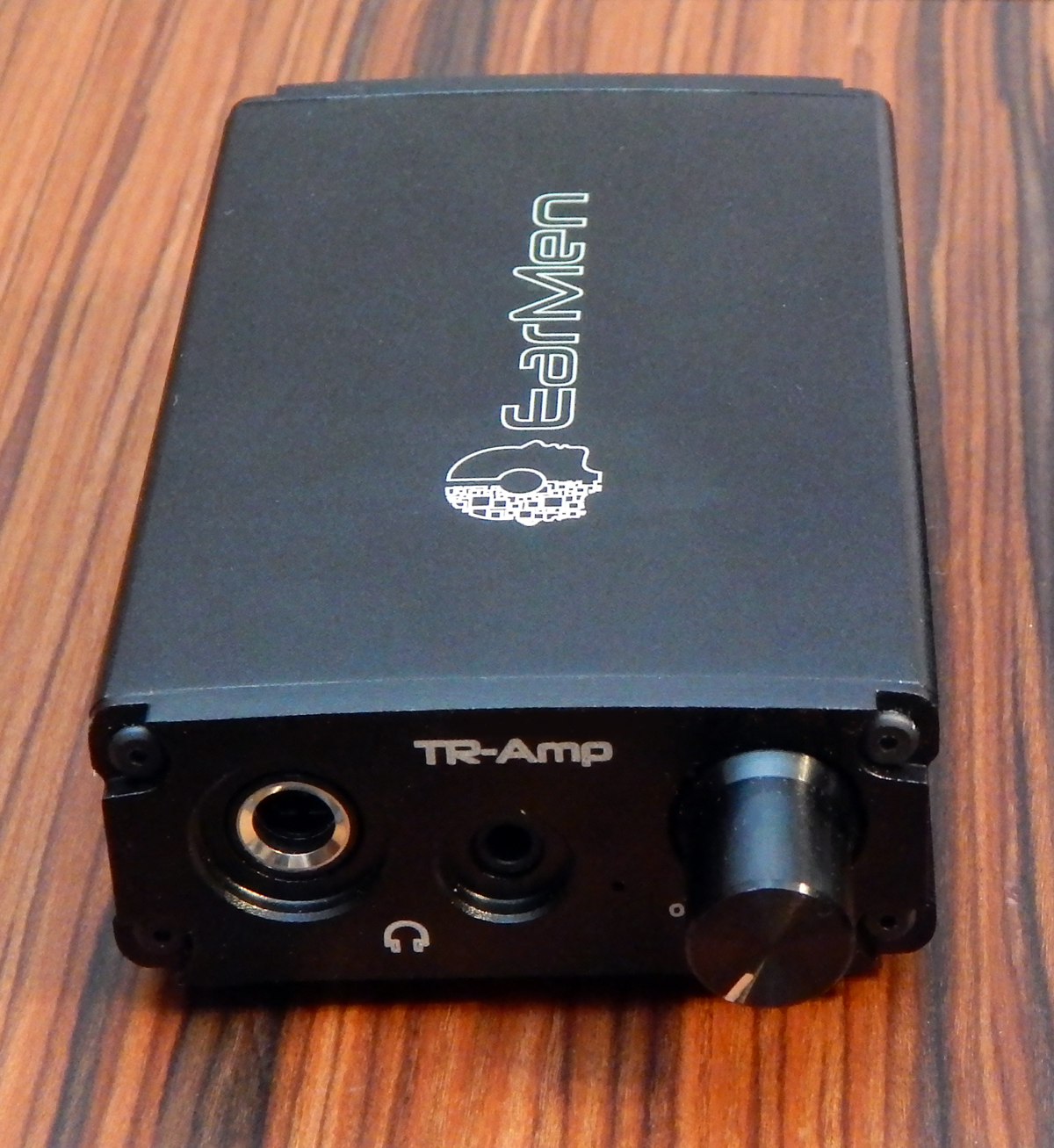
From the get-go, Justin Weber recommended the use of an inexpensive DAC/Preamp for this review, but I chose instead to go with a completely analog setup, that was of course until the amps and speakers showed up, but the turntable was still a week away. In order to facilitate burn-in, I used the EarMen TR-Amp that I had on my desk for a review for Headphone.Guru which can be found here. A quick list of features contained within that tiny box is as follows:
- NEW ES9038Q2MSABRE32Reference DAC Industry’s highest performance 32-bit mobile audio DAC with unprecedented dynamic range and ultra-low distortion
- Texas Instruments High Fidelity TPA6120 current-feedback AB amplifier architecture delivers high bandwidth, extremely low noise, and up to 128dB of dynamic range
- Super Low ESR tantal capacitors in power supply
- Able to decode PCM up to 32-bit/384kHz, Native DSD128, DSD256 via DoP, MQA
- 3700mA battery with up to 10h of music enjoyment
- Separate DATA and Charging USB type C ports allow you to use it all day long in your system
- Analog volume control for Preamp and Headphone amp
- Double Enjoyment with 2 pairs of headphones simultaneously
- Analog switch for Direct DAC or PreAmp function
- ALL METAL CNC milled aluminum housing, eliminates external noise sources
- Includes a high-level EarMen shielded female USB-A to USB-C Adaptor
A cigarette box sized brick, this little brute has quite a lot of weight to it and the fit and finish of its machined-aluminum bolt-together casing speaks of serious high-end. On the front end, you will find the Volume control, a ¼” TRS single-ended output, a 3.5mm TRS single-ended output, and the indicator light (six different colors depicting the unit’s current state). The back end sports two USB-C ports (one for data the other for charge/power), a toggle switch to switch between fixed and variable output (“Pre Out”/“Direct”), and a pair of single-ended (RCA) line outputs.
The review sample I received included the aforementioned USB-A to USB-C cable and a heavy-duty rubber belt strap for tying it to a like-sized source device, and came in black, though our friends at Moon Audio (Link) also offer it in red.
Price: $249 USD
Technical Specs
PCM 32-bit /384kHz
DoP DSD256
Native DSD128
MQA rendering
+128dB SNR A-Weighted,
-112,5dB THD+N,
400mW into 16 Ohm
Schiit SYS:
Back in the 1980s as part of my migration from multi-channel audio to two-channel audio, I acquired a PS Audio passive Preamp, which I quickly upgraded to the dual-mono version, which I used exclusively until the early ‘90s when I switched to a tube preamp. Both of these passive preamps sold for something in the neighborhood of $500 which is about $5,000 in today’s money. Of course, they also had phono-stages (Were they $5,000 phono stages? Probably.), but even without the phono stages, the passive preamp (which is still in use today, though not by me) section would still have sold for several hundred dollars, which is what makes the Schiit SYS such an amazing deal. As a matter of fact, I didn’t even bother borrowing a review sample and simply bought one figuring it would probably come in handy in the future.
In appearance, the Schiit SYS has the signature Schiit rolled aluminum look and is about the size of a DAP, slightly smaller than the TR-Amp, with a push-button switch and volume control on the front and six RCAs (2 in / 1 out) on the back.
The best thing about having the SYS in the system was it allowed me to do direct comparisons of digital and analog which is very helpful in determining the accuracy of the tonal balance of a cartridge.
Price: $49
Specifications:
Number of inputs: 2 (stereo RCA)
Number of outputs: 1 (stereo RCA)
Input impedance: 10k ohms
Output Impedance: 5k ohms maximum
Size: 5 x 3.5 x 1.25”
Weight: 1 lb
The Sound Check:
As noted above, I used the EarMen TR-Amp and a 1000 song playlist on Qobuz via the USB output of my FiiO M11 DAP (though the computer would have worked as well, the DAP allowed me to run the system 24/7 without interrupting my daily usage of the computer) to burn-in the ampsandsound Zion Monos and the Fritz Speakers Carreras along with the Cardas Iridium Speaker Cables (the rest of the Cardas cables have been in regular use for a couple of months now). Once I received the VPI Player and burned that in, I began the process of setting up the speakers proper. This involved not only determining placement (IE: which side of the room do they like best, live or dead end, how far from walls, each other, and listener as well as placement of the listener, how far from the back wall, how far from the speakers) and toe-in (on-axis, off-axis), but which taps from the Zion outputs to use. As the speakers were 6 ohms the safe bet was the 4-ohm taps which I used for burn-in, but both Justin and Fritz suggested I try the 8-ohm taps as this offers a little more dynamic range and after extensive listening to both, I settled for the 8-ohm taps. Many speakers prefer to be used on-axis (facing straight forward rather than at the listener) and the Carreras appear to be one of these. On the other hand, in a small sound room it is hard to get the 32’ of space necessary for low frequencies to avoid waveform cancellation, so running the speakers slightly off-axis helps with this. As a compromise, I moved my seating closer to the speakers and ran them slightly off-axis.
My initial sound checks were very promising, with excellent tonal balance, deep bass, and a solid and enveloping soundstage (I like to be about 10’ from the stage).
Once I acquired the Schiit SYS and had it in place I used Robert Shaw and Atlanta Symphony Orchestra’s performance of “The Firebird Suite” (“Stravinsky: The Firebird; Borodin: Music from Prince Igor” – 16-bit/44.1kHz for digital version) to perform the final adjustments since I had it both on vinyl and CD. This test also let me verify what I had suspected that the Audio-Technica AT-VM95E was much more linear than its predecessor. While the Elliptical stylus brought out the vinyl noise a little more than the Line Contact (Shibata) stylus on my personal turntable (mind you my regular cartridge costs almost as much as the whole Player Turntable), the tonal balance was indistinguishable from the digital recording on A/B tests (though the vinyl will be higher resolution and more musical, the tonal balance of the digital copy should be unchanged from the master).
Keyed in, the sound of the system was epic. The timbre and tonal balance of the system was phenomenal, from the opening rumble of the double bass celli, contrabassoons, and tubas to the delicate woodwinds and strings to the crystal triangle. The interplay of the oboe, flute, English horn, and clarinets was easily perceptible with each instrument fixed in space and the impact of the bass drum and timpani was palpable, much more so that one would expect from so diminutive a speaker.
It was clear that the honeyed midrange of the Zion Monos lent an extra measure of musicality to the beryllium tweeter of the Fritz Speakers creating a lush three-dimensional soundstage with both width and depth.
The luxury of vinyl allowed me to break out one of my all-time favorite records, my Direct To Disc recording of Virgil Fox’s “The Fox Touch: Volume One”. On this record, Virgil performs Johann Sebastian Bach’s “Toccata and Fugue in D Minor” on a Fratelli-Ruffatti pipe organ with 116 ranks, 108 stops and 6,791 pipes and bass notes going down to 16Hz, which is well below the 35Hz roll off of the Fritzs and should put them to a real test.
To say I was not disappointed is an understatement, while I can’t say that a subwoofer operating in the 15Hz to 35Hz range would not have enhanced the experience, there was plenty to love and very little to be desired. The image of hearing the sound move around the room as different pipes came into play (each note has a different point in space due to being a separate pipe) was awe inspiring, and the recording has lost none of its gusto over the 43 years since it was made.
Lest you think I have nothing on vinyl other than audiophile classical recordings I selected an extremely rare record from Nasmak a progressive punk/new wave band from the early ‘80s (a sort of cross between “Discipline” era King Crimson and The Talking Heads), “4our Clicks”. It was like being in the studio, with the bass and drums up front and in your face, while the vocals floated behind against a back wall of guitars and synth. You could not sit still, you could not not-bob your head and body to the arrhythmic pulsating beat. It was wonderful.
Beyond the amazing sound quality, vinyl is demanding. There is ritual involved in selecting the record, cleaning the record, destatictizing the record, and you have to commit to 30 minutes of music from a single artist, not just the hits (which is why I talk of albums rather than individual tracks much of the time). It also demands more attention, it demands you immerse yourself in the music, and a system like this makes that well worth it.
In 1981 Sheena Easton appeared on Johnny Carson and I immediately went out and bought her album “Take My Time”. I had to order it from Japan as it had not as yet been released in the US (this was long before she covered a Prince song or even before she sang “For Your Eyes Only” which was her second album) and it became the first of a rather large collection of Japanese pressings I once had (over 200 at its peak, I foolishly traded 50 or so for CDs, the rest I still have). The song that floored me, and still to this day is one of my favorite songs, was “When He Shines”.
Chills. That was how I felt listening to this cherished masterpiece on the ampsandsound, Fritz, VPI, Cardas, and Schiit audio chain. Sheena’s voice was one of the most fluid and luscious I have ever heard, and this system made her shine. The presentation was very intimate, with her deeply emotive vocal against the ethereal Rhodes piano and the stark ‘80s drum and bass. Again the soundstage was a peek into the studio with the performers only a handful of feet away.
Another tale of ancient history, the guitar player from one of the bands I was associated with in High School met a violinist one day and was invited to sit in on a recording session. The album that came out of that session was “Imaginary Voyage” and the violinist was Jean-Luc Ponty and this legendary album seemed like the perfect choice to represent the Jazz genre on a system that seems tailor-made for Jazz.
So I pulled out my Japanese pressing and put on side two which houses the four-part eponymous 19 minute and 55-second “Imaginary Voyage” suite. Though I wasn’t at that session, I now know what it would have been like. This is not a system that lies to you. Each nuance of the fast-paced musically dense performance was presented stark and bare without veil, enhanced with an exceptional dynamic range. Not only was Jean-Luc’s violin razor edge realistic, the piano had that strident multi-layered harmonic texture rarely captured in sound reproduction. The bass and percussion were tight and authoritative with that live studio snap. On side one the energy produced by the Jazz/Bluegrass Fusion piece “New Country” had my heart thumping and my adrenaline pumping.
One last prized Japanese pressing was called for, this time the classic rock & roll of “Led Zeppelin III” which has always been my favorite album from this illustrious heavy metal hard rock band, in particular, side two with its plethora of folk/blues ballads rich in acoustic guitar. What I never noticed before was how layered these recordings were with multiple guitars playing different parts. The different tonalities of the various acoustic and steel guitars were easy to pinpoint, each in its own space set in a vast soundstage, making it clear why they were such a great studio band.
Conclusions:
At $20,298 this is not exactly a budget system, but that being said, it is a little piece of audio nirvana and could easily duke it out with systems costing twice as much. Setup was a little fussier than say the Manepans, but once keyed in it delivered in spades, with a large three-dimensional soundstage, true to life timbre and impressive dynamics. This may seem odd to say about a bookshelf size speaker, but it probably would have preferred a larger listening room, for one, in a room with about 40’ of depth the speakers could have been placed on-axis without waveform cancellation in the bass and as noted above, they seem to prefer on-axis listening.
This is also a system that could be looked at as a minimum starting point and upgraded later. Which begs the question, “what would I change?” For starters, I would add a tube preamp with a phono stage (a Schiit Freya + & Mani combo would be ideal, and they are available in black to match the other components). While the combination of the VPI Player and Schiit SYS provided amazingly musical sound, it was clear that I wasn’t pushing the system to its maximum potential. And as I said before, if you want to shake the house, a subwoofer that works well in the 16Hz to 35Hz region would certainly enhance the experience. Anything else would be simply fine-tuning, like an upgraded cartridge with a Shibata style stylus would not only give you more detail, it would be more dynamic with less noise and reduce record wear to boot.
A DAC upgrade might also be in the books, but I still think of this as primarily an analog system. While the EarMen TR-Amp is perfectly adequate and offers excellent sound for the money, this system really calls out for reference quality gear and the DAC should be no exception.
So did I get $21k worth of sound? Truth is, I got $40k worth of sound, I would have no problems recommending this system to anyone who has the budget. If you want true aural magic, this is the package, and if you can, I recommend giving it a listen at T.H.E. Show, I think you will agree.
Manufacturer’s Websites:

Fritz Speakers





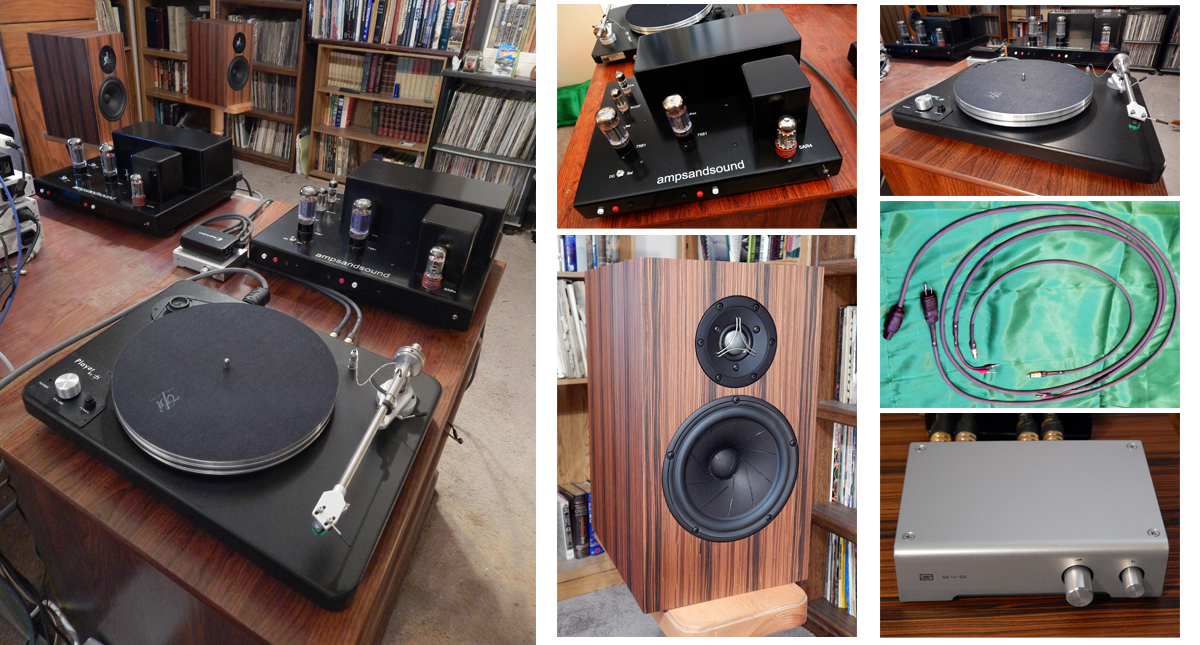






Leave a Reply
Want to join discussion?
Feel free to contribute!